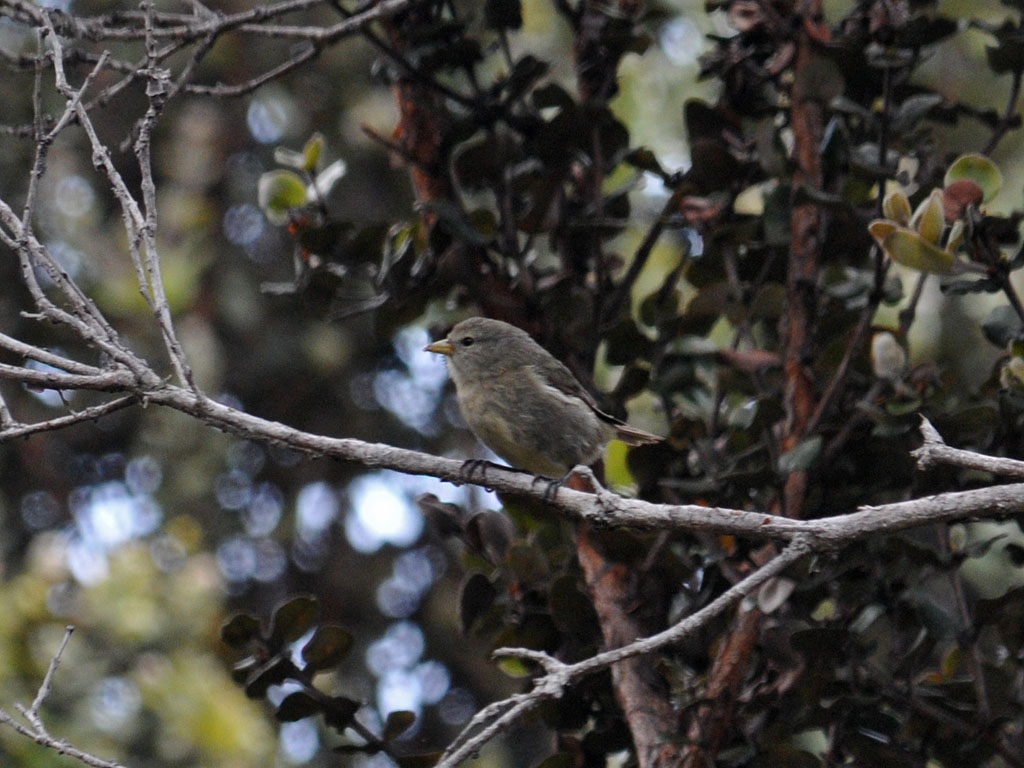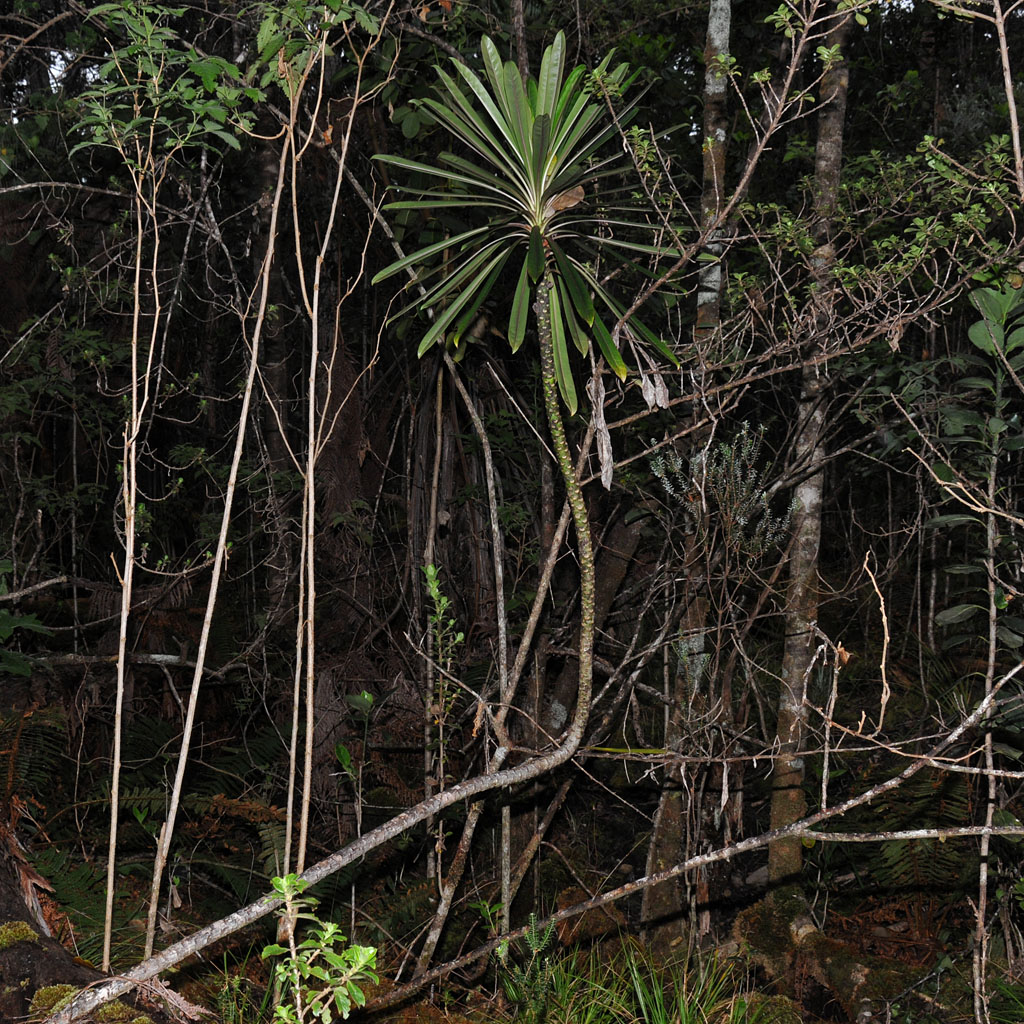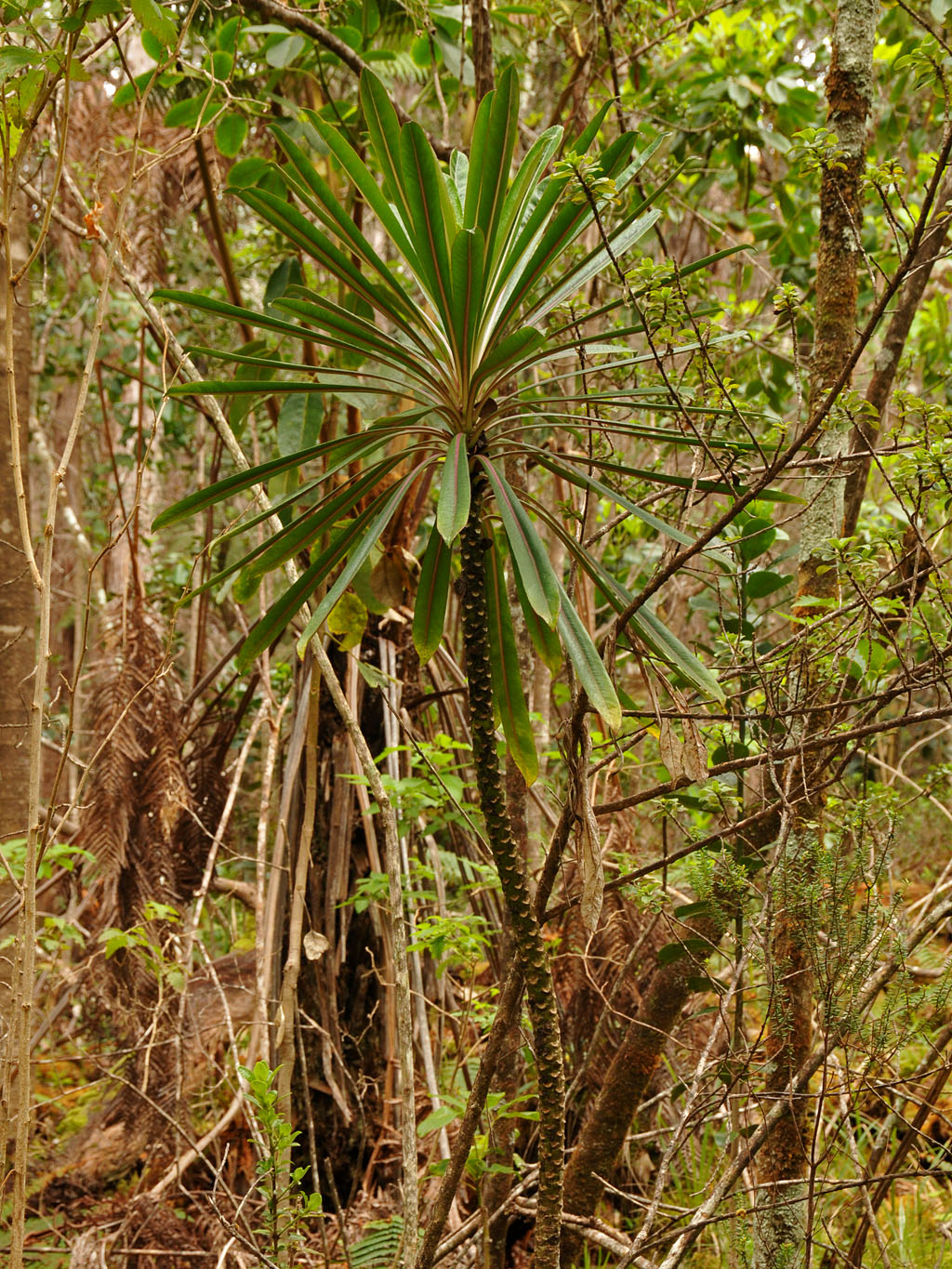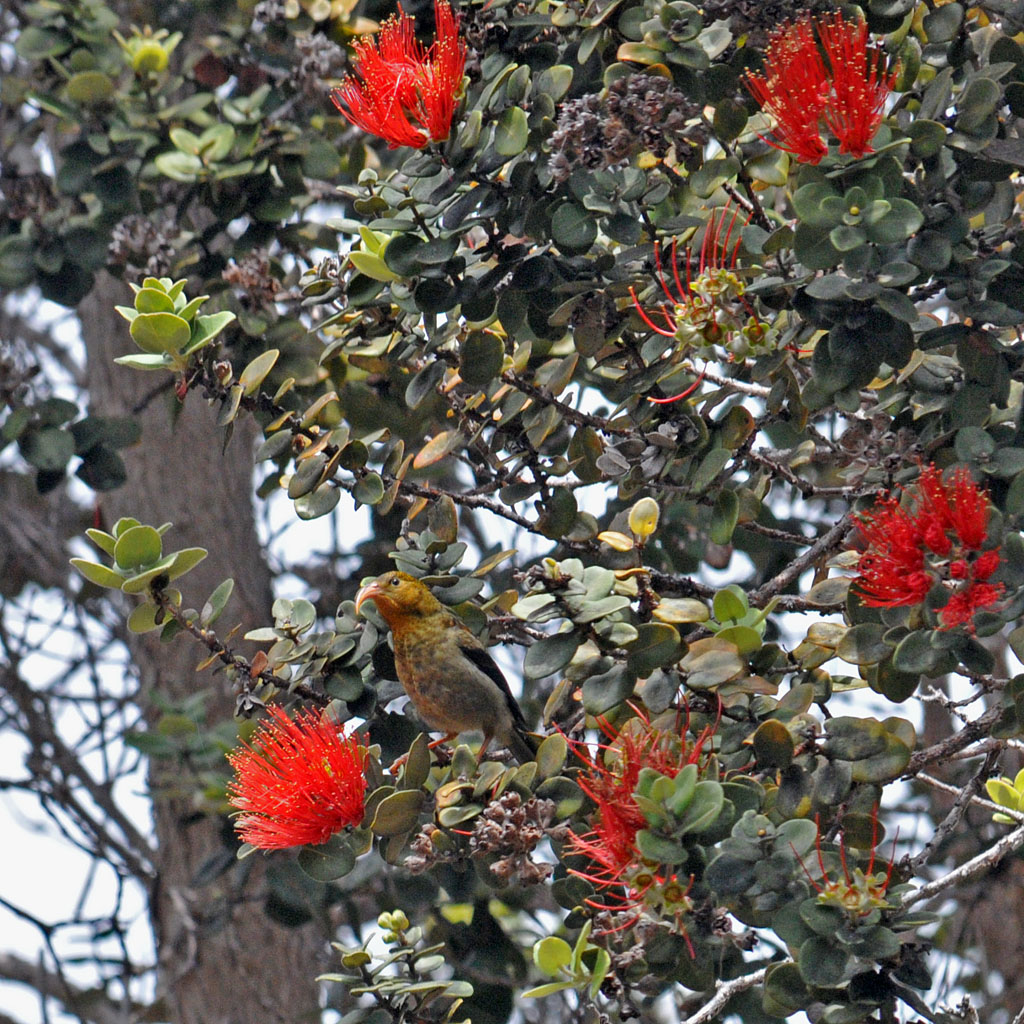The forecast predicted dry skies for the first time in weeks, and I hoped to get up early and explore a new area on Powerline Road. When I woke up at 4:55AM I thought "super, I'll be there at dawn!" I rolled over...and it was 6:25AM. "Oh FSCK!"
It was indeed clear on the Saddle, though heavy vog was starting to drift in from the South. The breezy shifting winds and swirling cloudlets overhead reassured me that nothing convective would be happening today. The vog was quite sulfur-tastic and nucleated an early cycle of haze, overcast and fog. No rain, though. I was able to explore until sunset...and beyond!
My late (8:30AM) arrival squashed my hopes of exploring a new kipuka, and I settled in to the usual routine of counting birds along Powerline Road. My initial observations were a bit odd. There was a yellow-fronted canary in the parking area, and a red-billed leiothrix in an 'ohi'a tree on the lava field. What does it mean?! Once I reached the first kipuka everything was the recent version of normal. 'Apapane are still at low levels and Japanese white-eye are nearly absent. I'iwi were a little down today. 'Akepa and Hawai'i creeper were still abundant (i.e. the same 2-3 of each with me all day) in kipuka ahiu. At the end of the day there was one last surprise when after dark I flushed a pair of kolea off of Powerline Road, where they had come down to roost for the night. Ooops, sorry!
When I reached kipuka ahiu at noon it was already starting to get fairly dark and ominous. I decided against getting too farm from the road in case the weather turned bad, and set myself to searching for more rare cyanea. I explored yet another part of kipuka ahiu that I had foolishly discounted and neglected in the past. Despite pig and sheep damage this part of the kipuka was surprisingly lush. Creepers were creeping in the tops of the 'ohi'a above me, and tweedly 'akepas came and went. I found plenty of interesting plants, including a nicely flowering stenogyne sessilis, which I've been hoping to find. I searched the wettest and most rugged part of the kipuka in a zig-zag pattern, marking waypoints as I went. I heard pigs a couple of times, but they moved on ahead of me.
Late in the day as I was starting to flag when a familiar and distincitive shape in the foliage caught my attention. It wasn't quite what I was looking for, and certainly wasn't at all what I expected. I had stumbled upon the largest koli'i I've ever seen! They're usually residents of wet forests, including windward Mauna Loa and the boggy summit of Kohala. I never expected to see one on the Saddle, even though the Saddle is specifically mentioned as a location for the species in The Manual. This one is over ten feet tall, though at some point it had fallen over and took a 75 degree turn to get itself growing upward again. It's one impressive plant, and must be at least 10 years old.
Koli'i flower once (October) before dying, and it seems that this massive plant can't be more than a year or two away from flowering. Given the height of this koli'i, and the large number of i'iwi in this kipuka, it will be interesting to see if the i'iwi visit its flowers. I've seen the i'iwi in this kipuka come down to sample 'akala, but this koli'i is a plant none of them have ever seen before. Its flowers are designed for the curved beaks of i'iwi and mamo.
'Akepa:

King Koli'i


Juvenile I'iwi:

It was indeed clear on the Saddle, though heavy vog was starting to drift in from the South. The breezy shifting winds and swirling cloudlets overhead reassured me that nothing convective would be happening today. The vog was quite sulfur-tastic and nucleated an early cycle of haze, overcast and fog. No rain, though. I was able to explore until sunset...and beyond!
My late (8:30AM) arrival squashed my hopes of exploring a new kipuka, and I settled in to the usual routine of counting birds along Powerline Road. My initial observations were a bit odd. There was a yellow-fronted canary in the parking area, and a red-billed leiothrix in an 'ohi'a tree on the lava field. What does it mean?! Once I reached the first kipuka everything was the recent version of normal. 'Apapane are still at low levels and Japanese white-eye are nearly absent. I'iwi were a little down today. 'Akepa and Hawai'i creeper were still abundant (i.e. the same 2-3 of each with me all day) in kipuka ahiu. At the end of the day there was one last surprise when after dark I flushed a pair of kolea off of Powerline Road, where they had come down to roost for the night. Ooops, sorry!
When I reached kipuka ahiu at noon it was already starting to get fairly dark and ominous. I decided against getting too farm from the road in case the weather turned bad, and set myself to searching for more rare cyanea. I explored yet another part of kipuka ahiu that I had foolishly discounted and neglected in the past. Despite pig and sheep damage this part of the kipuka was surprisingly lush. Creepers were creeping in the tops of the 'ohi'a above me, and tweedly 'akepas came and went. I found plenty of interesting plants, including a nicely flowering stenogyne sessilis, which I've been hoping to find. I searched the wettest and most rugged part of the kipuka in a zig-zag pattern, marking waypoints as I went. I heard pigs a couple of times, but they moved on ahead of me.
Late in the day as I was starting to flag when a familiar and distincitive shape in the foliage caught my attention. It wasn't quite what I was looking for, and certainly wasn't at all what I expected. I had stumbled upon the largest koli'i I've ever seen! They're usually residents of wet forests, including windward Mauna Loa and the boggy summit of Kohala. I never expected to see one on the Saddle, even though the Saddle is specifically mentioned as a location for the species in The Manual. This one is over ten feet tall, though at some point it had fallen over and took a 75 degree turn to get itself growing upward again. It's one impressive plant, and must be at least 10 years old.
Koli'i flower once (October) before dying, and it seems that this massive plant can't be more than a year or two away from flowering. Given the height of this koli'i, and the large number of i'iwi in this kipuka, it will be interesting to see if the i'iwi visit its flowers. I've seen the i'iwi in this kipuka come down to sample 'akala, but this koli'i is a plant none of them have ever seen before. Its flowers are designed for the curved beaks of i'iwi and mamo.
'Akepa:

King Koli'i


Juvenile I'iwi:




